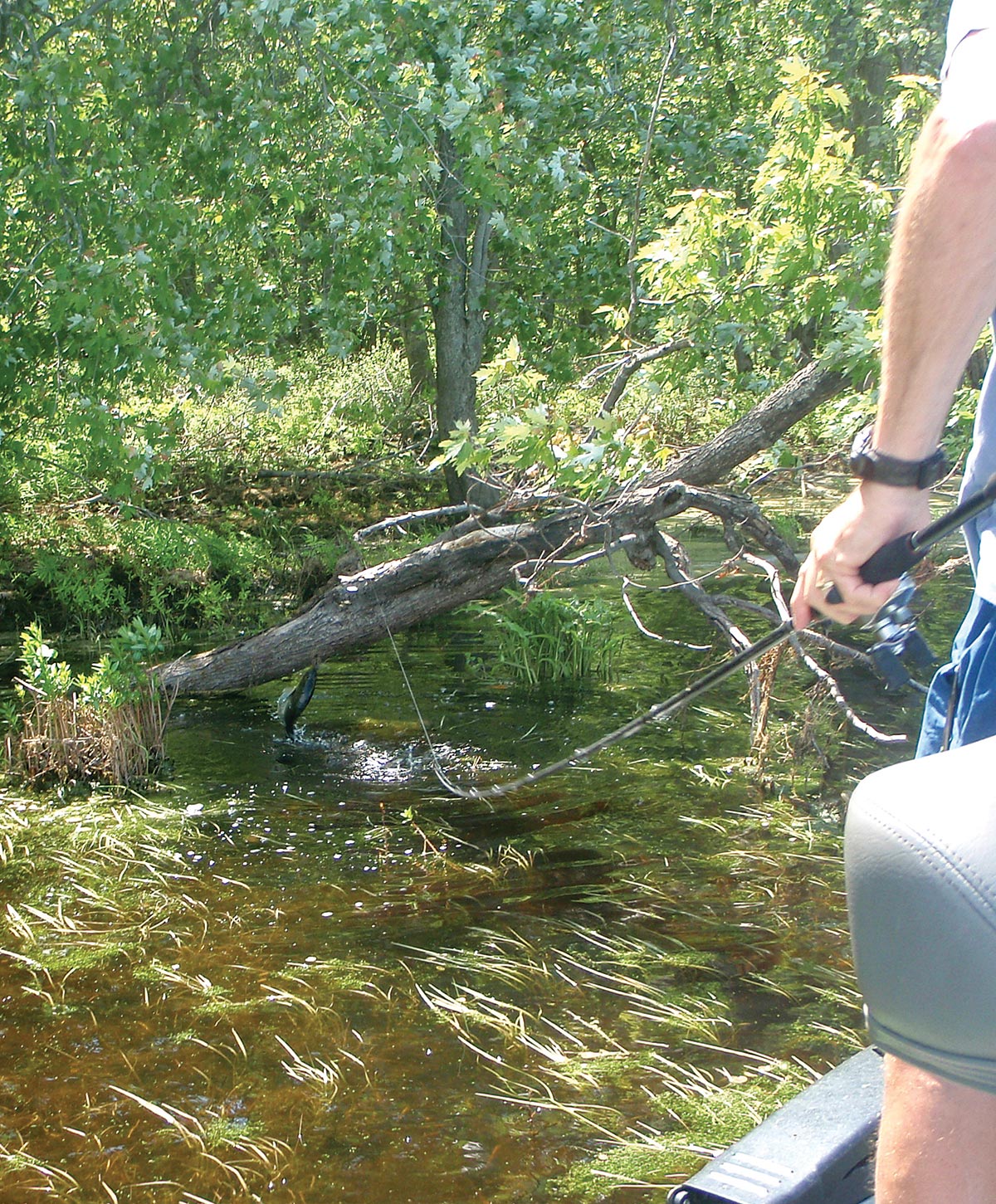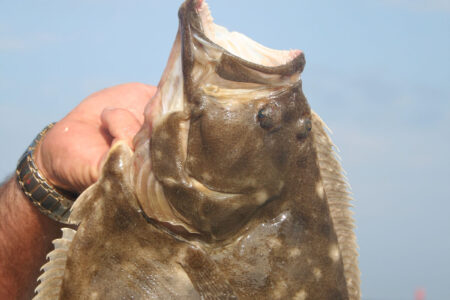
Catching largemouths once the weeds and lily pads take over your favorite lake or pond requires a change in tactics.
Targeting largemouth bass during summer in many of Long Island’s lakes and ponds can be challenging, but also very productive if you go about it in the right fashion. We have all been taught that in the summer, as waters heat up and weed growth expands, bass go into the deepest cover and hunt mainly as the waters cool after dark. True to some degree, but while bass do become less active on some bodies of water, they still have to eat. In fact, bass eat well during the summer months, so let’s take a look at what it will take to land a hawg or two.
If you fish the same bodies of water in the spring, you have an excellent opportunity to develop knowledge about those lakes before waters warm and weeds begin to overtake them. In spring as lily pads begin to form, they will come up in groups or patches with spaces in between. Pinpoint the spaces by shore marks or with your electronics. These spaces are usually slightly deeper than the first lilies. These deeper areas hold bass as the water temps rise.
Other knowledge like water depth, edges and the locations of underwater weed lines and beds all helps you locate where bass are holding during the summer months. This is all very valuable as waters warm, and the lakes become overgrown.
Sloppy Tactics
Once summer settles in and your favorite lake or pond has become choked with weeds and lily pads, it’s time for a change in tactics – time to go sloppy fishing! Fishing the slop means going into the trenches with weedless frogs, worms, jigs, and under the right conditions, top water plugs like poppers.
Use that knowledge gained from earlier visits to the lake before the weeds masked bass-hiding cover. Think back to Lake X where the lily pads were beginning to appear. Remember that hole in the pads about 25 feet off the bank. Flip a Strike King Rattlin Pro Jig in blue or green pumpkin with appropriate Big Bite Baits in blue or green as a trailer. Let it fall, give it one or two seconds and repeat. If you get no takers, try a small popper or weedless frog. Cast the frog to the outer edge of the lily pads and drag it slowly towards that opening. With the popper, work it just outside and along the edge of lily pad beds, then make one short pop and let it sit until the circles from the popper disappear, then pop again.
My favorite tool is the jig. I love to fish it because the fact is a jig catches bass all year long and is especially effective in the summer. One of my favorite tactics involves the use of jigs. When you scout out a lake, look for the heaviest cover you can find. If there are any cattails along the water’s edge, head there. I’ve caught many nice bass by tossing a jig above the cattails and letting it drop down inside them. A jig is the only tool that allows you to penetrate the cattails, and that is where your biggest bass will be lying in the heat of the summer.
How about that stretch of water where it is nothing but heavy weed growth such as milfoil, and nothing can seem to penetrate it? For this scenario, rig a weedless rubber worm with a weight of 3/4 to 1 ounce pegged tight to the hook. This rig will penetrate the heaviest of cover. Allow the worm to wiggle its way through the heavy stuff and to settle on the bottom. Slowly drag it a few feet, then retrieve and cast to another section of heavy cover until you connect with a fish.

Slop Tackle
On the tackle side, put the light gear aside. Slop fishing means heavy cover and either heavier fluorocarbon, monofilament or braid. There are times when I use 50-pound braid for freshwater fishing. This seems like overdoing it since I don’t even go heavier than 20-pound when chasing blues and bass in the surf. Then again, bass and blues are not running around a stump, or wrapping your line around lily pads.
Bass will always head for shelter after being hooked, and this is where the heavy line really comes into play. Braid of 50-pound test or more has the ability to cut through the lily pad stems. It also gives you the opportunity to play a fish around a stump without fear of breaking it off.
When tossing frog baits, tie the braid directly to the frog. For jigs, I use a 30-pound mono leader tied into the braid with a double-uni knot and then finished off with glue. Fluorocarbon is the best choice when fishing heavy cover due to its high abrasion resistance and ability to stand up to fish wrapping you around structure. Its sink rate also allows you to get the best action out of swimbaits and jerkbaits. For topwater baits, I like 20-pound mono for my leader material, and you cannot go wrong with Ande clear. It is tough, floats, and will withstand some abrasion.
On the rod end, you cannot go wrong with any quality baitcaster rated for 10- to 20- or 12- to 25-pound test with a fast taper. These rods have sensitivity in the tip, yet the backbone to get the job done. On the reel end, I prefer a fast retrieve of 7:1 or even higher. When using mono, try using the highest ratio you can get your hands on. Abu, Kastking, and Shimano are all making reels with ratios of 9:1 and higher, and this really plays a role when taking up the slack after the hookset.
Summertime bass action can be a load of fun, and it can also reward you with the trophy fish of a lifetime. Be patient, work the slop, and I guarantee you will be smiling at the end of the day. And remember, those big bass are a precious resource, so make sure you snap that photo quickly and get them back into the water.



